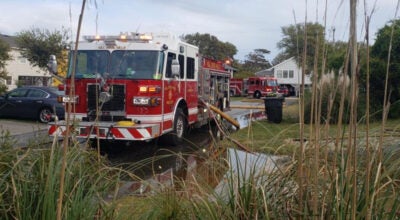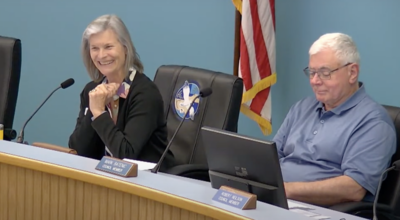Hurricane Dorian now a category 5
Published 8:33 am Sunday, September 1, 2019

- NOAA image
The latest update from NOAA’s National Hurricane Center at 8 a.m. Sunday, September 1 reports Dorian is now a category 5 hurricane.
Data from an Air Force Hurricane Hunter plane, which just penetrated the eye of Dorian, indicates that the maximum sustained winds have increased to near 160 mph with higher gusts. Dorian is now a category 5 hurricane on the Saffir-Simpson Hurricane Wind Scale.
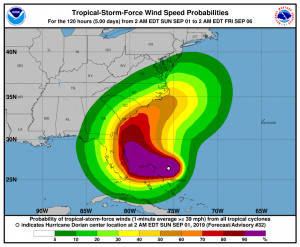
NOAA image
Hurricane-force winds extend outward up to 30 miles from the center and tropical-storm-force winds extend outward up to 105 miles. Elbow Cay in the Abaco Islands just reported winds of 35 mph. The minimum central pressure just measured by an Air Force plane was 927 mb (27.37 inches). Some fluctuations in intensity are likely, but Dorian is expected to remain a powerful hurricane during the next few days.
A Hurricane Warning continues for the northwest Bahamas excluding Andros Island. A Hurricane Watch continues for Andros Island. A Tropical Storm Warning continues along the east Florida coastline from north of Deerfield Beach to Sebastian Inlet. A Tropical Storm Watch continues from north of Golden Beach to Deerfield Beach.
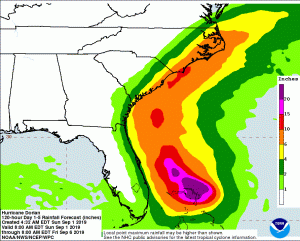
NOAA image
The NHC advises devastating hurricane conditions are expected in the Abacos Islands very soon and these conditions will spread across Grand Bahama Island later Sunday. Tropical storm conditions are expected within the tropical storm warning area on Monday. Tropical storm conditions are possible within the tropical storm watch area by Monday night. Interests elsewhere in South and Central Florida should continue to monitor the progress of Dorian. Additional watches or warnings may be required for portions of the east coast of Florida today.
Hurricane Dorian is centered as of 8 a.m. Sunday about 35 miles east of Abaco Island and about 225 miles east of West Palm Beach, Fla. Dorian is moving toward the west near 8 mph and a slower westward motion should occur for the next day or two, followed by a gradual turn toward the northwest. On this track, the core of Hurricane Dorian should be moving over Great Abaco soon, and continue near or over Grand Bahama Island later Sunday night and Monday. The hurricane should move closer to the Florida east coast late Monday through Tuesday night.
Forecasts show a life-threatening storm surge could raise water levels by as much as 15 to 20 feet above normal tide levels in areas of onshore winds on the Abaco Islands and Grand Bahama Island. Near the coast, the surge will be accompanied by large and destructive waves.
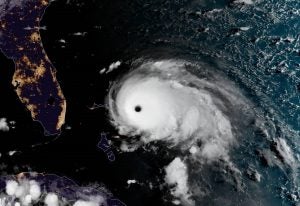
NOAA image
Dorian is expected to produce rainfall totals through late this week of 12 to 24 inches (isolated 30 inches) in the northwest Bahamas, 5 to 10 inches (isolated 15 inches) in the coastal Carolinas and 2 to 4 inches (isolated 6 inches) in the central Bahamas and the Atlantic coast from the Florida peninsula through Georgia.
The next complete advisory will be issued by National Hurricane Center at 11 a.m.
Governor Roy Cooper has issued a State of Emergency for North Carolina, which lifts restrictions on transportation and trigger’s the state’s anti-price gouging law. The most recent predictions show the storm’s center just off the coast of the southern Outer Banks early Friday morning.
The Ocracoke Deputy Control Group met Saturday evening, August 31 to receive an update on Hurricane Dorian from the Hyde County Emergency Services Department. No immediate actions were recommended during this meeting. The control group will meet again Sunday, September 1 at 6 p.m. to discuss any future protective measures.
READ ABOUT MORE NEWS AND EVENTS HERE.
RELATED:



